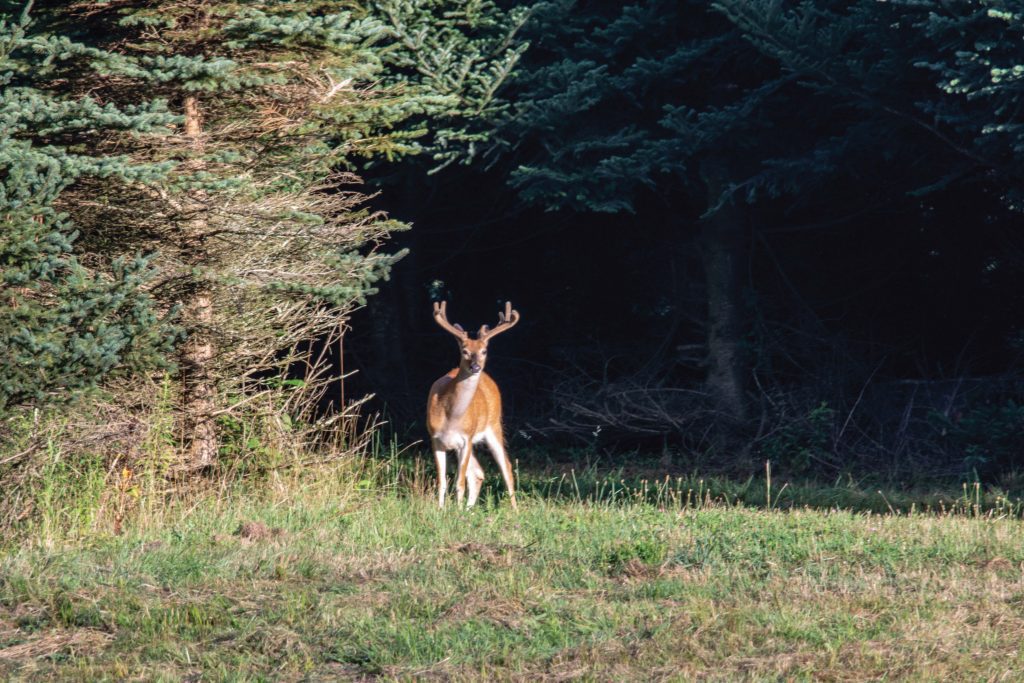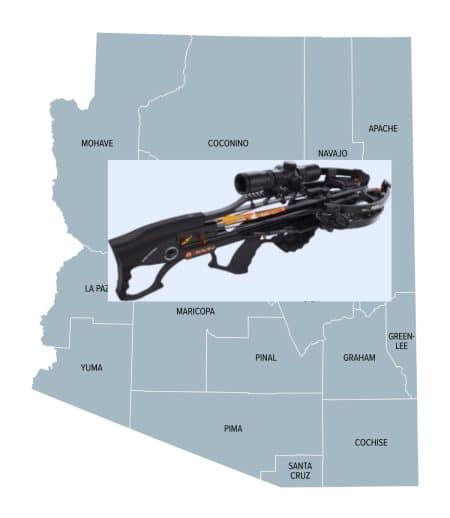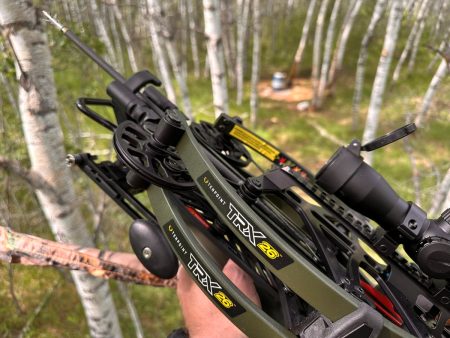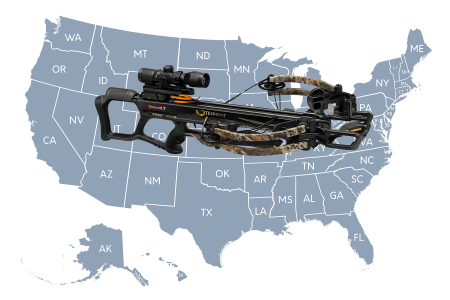There’s a lot of emphasis nowadays on becoming a year-round deer hunter. More time spent afield observing whitetails during all four seasons leads to a greater understanding of the animal and its habits. Also, there are a number of summer projects, such as planting food plots and making habitat improvements, that can contribute toward success later on. In terms of actual scouting, though, can you really learn anything beneficial about deer patterns that will help you this fall?
IDENTIFY SEASONAL FOOD SOURCES
Some would argue that whitetails go through so many changes between now and the first day of archery season that anything you learn about a deer won’t matter come September. To an extent, this is true. The location of soft mast such as apples is a prime example. I remember one August day when I was so excited to find an apple tree that deer were flocking to. Apples hit hard that year, and they literally blanketed the ground under the tree. If I hadn’t seen it with my own eyes, I never would have believed that in only three weeks they could all be gone. Imagine my disappointment to go there on the first day of archery and find not a speck of fruit left.
Safe to say, I educated myself about apple trees after that and learned how to identify various species of trees and when they typically ripened. That knowledge soon led me to find an apple tree in early summer that didn’t have much fruit on it yet, but I knew it was a species that ripened late. I made a mental note of its location and ended up killing a very nice 10-point that was coming to freshly fallen apples in mid-October. In fact, I killed bucks there four years in a row during that same time frame when that particular species of apple tree peaked.
This also applies to hard mast such as acorns. Knowing exactly when they hit in your area can increase your odds of success. Only a few things cause a whitetail to shift its travel patterns and behaviors. These include hunting pressure, bedding cover, and food sources. And there’s no better time to get out and locate those mast-producing trees than the dog days of summer.
HOME RANGES AND BEDDING AREAS
It’s no secret that mature bucks prefer to bed in thick cover. The problem with trying to find bedding areas during the summer months is that this time of year, everything looks thick. It can be hard to distinguish the type of cover where mature bucks tend to bed versus transition foliage that will die off after a few cold nights. However, the shift in bedding areas isn’t always as drastic as we think. Yes, I have seen bucks shift several miles from their summer bedding areas to their fall bedding areas. It happens and sometimes there’s just nothing you can do about it. More often, though, I’ve seen bucks make only short transitions of fewer than a few hundred yards to bed in thicker cover where they feel safe or to avoid hunting pressure.
Within a buck’s home range, he may have multiple bedding areas. Some may get used more in the summer, and others may get used more frequently in the fall. The nice part about locating summer bucks is that their patterns are about as predictable as they’re ever going to be. And although their exact bedding area may change, there’s a good chance that their home range will not. Big bucks get old by surviving, and they don’t do that by changing up their home ranges every few months. They may start sleeping in different rooms, but their houses rarely change. Remember, only a few factors will cause a buck to abandon an area where he has lived his entire life. As long as hunting pressure remains low and food and cover are readily available, the bucks you find in the summer should be using the same general area come fall.
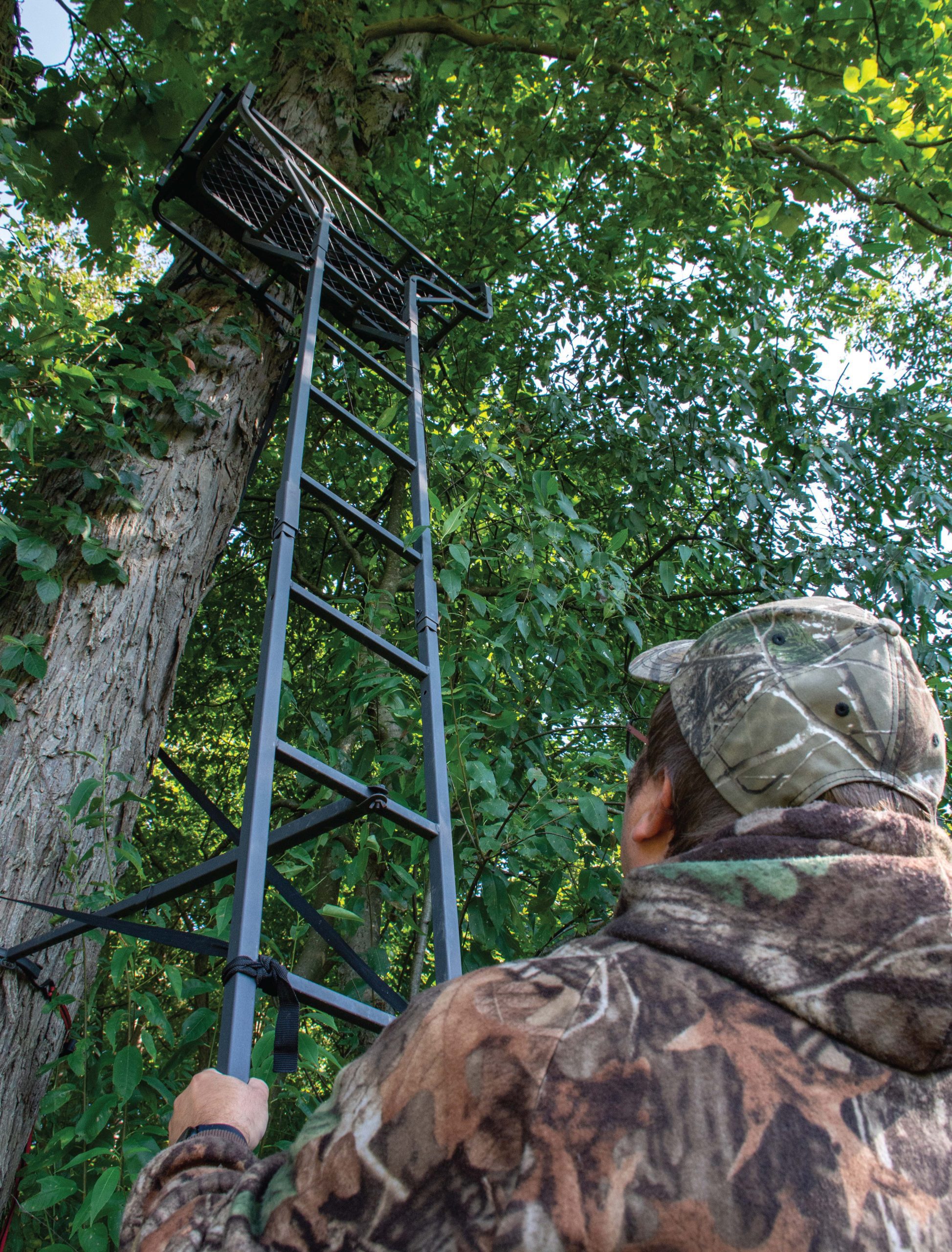
SCOUT NEW AREAS
Summer is my favorite time to scout new property. Every summer, I venture into a few new areas, look for old rubs, locate mast trees and potential bedding cover, put up a handful of trail cameras, and then never go back to check them until after the season. I learn a lot about the area, but the best part is when I can locate a buck that survives hunting season. More often than not, I’ll have trail camera photos of that deer all season long, and it’s neat to see how its patterns may have changed.
One of the most memorable bucks I ever located this way had a huge rack but also appeared to be a fairly young deer. I had photos of him all summer and fall, but never got to hunt him because I killed a different buck early in the season. The next summer, that deer was still bedding in the same spot and using the same trails as the previous year to enter and exit that bedding area. I hunted hard for that deer, and had a couple of close encounters, but never sealed the deal.
Unfortunately, gun season came and a group of guys killed the buck while putting on a deer drive. I’d even heard their shots because I was in a stand only a few hundred yards away! That’s just the nature of public land, I guess. The most interesting part of it, though, was that the deer had never shifted at all. From the day I first learned of his location until the day he died, he bedded in the same corner of a thicket and never once changed anything about his patterns, including the fact that he rarely got up out of his bed before dark.
When scouting new areas during the summer months, keeping a journal is a must for me. My memory isn’t as good as it used to be, so a few quick notes about what I found, potential hot spots, and where I hung cameras can come in handy. Hunting apps such as onX Hunt, which allow you to drop pins on points of interest, are great tools for this. It’s always neat to return to that new area after hunting season to see if your summer predictions were accurate.
HANG AND PREP STAND LOCATIONS
Summer is a great time for putting up stands, too. If you’re convinced a location is going to be a hot spot, go ahead and hang a stand. I hang stands as soon I know where I want to hunt so I can trim shooting lanes without fear of spooking deer. Also, one of the biggest mistakes hunters make is not planning routes to and from those stands. If you’re bumping deer every trip into the woods, sooner or later they’re going to figure out why and start avoiding certain areas. A few simple preparations can be enough to keep the spot fresh, though. Take a rake with you on a summer scouting trip and clear out a little walkway leading into the woods behind your stand. I make the walkway at least a couple of feet wide so that there will still be enough bare ground left even if a few leaves do blow back over the trail. With a little maintenance, some of these trails will provide several seasons of quiet approaches after the initial investment of time. These cleared trails don’t have to be hundreds of yards long. Sometimes the path only has to be 50 yards to get the job done. If possible, connect your stand to an old logging road, tram road, or field edge that will provide quiet walking the rest of the way. Little details like this can make a huge difference come fall. If done right, summer can be a great time to scout and get ready for hunting season. Any time spent in the woods is time well spent, regardless of the actual month on the calendar.
Per our affiliate disclosure, we may earn revenue from the products available on this page. To learn more about how we test gear, click here.

